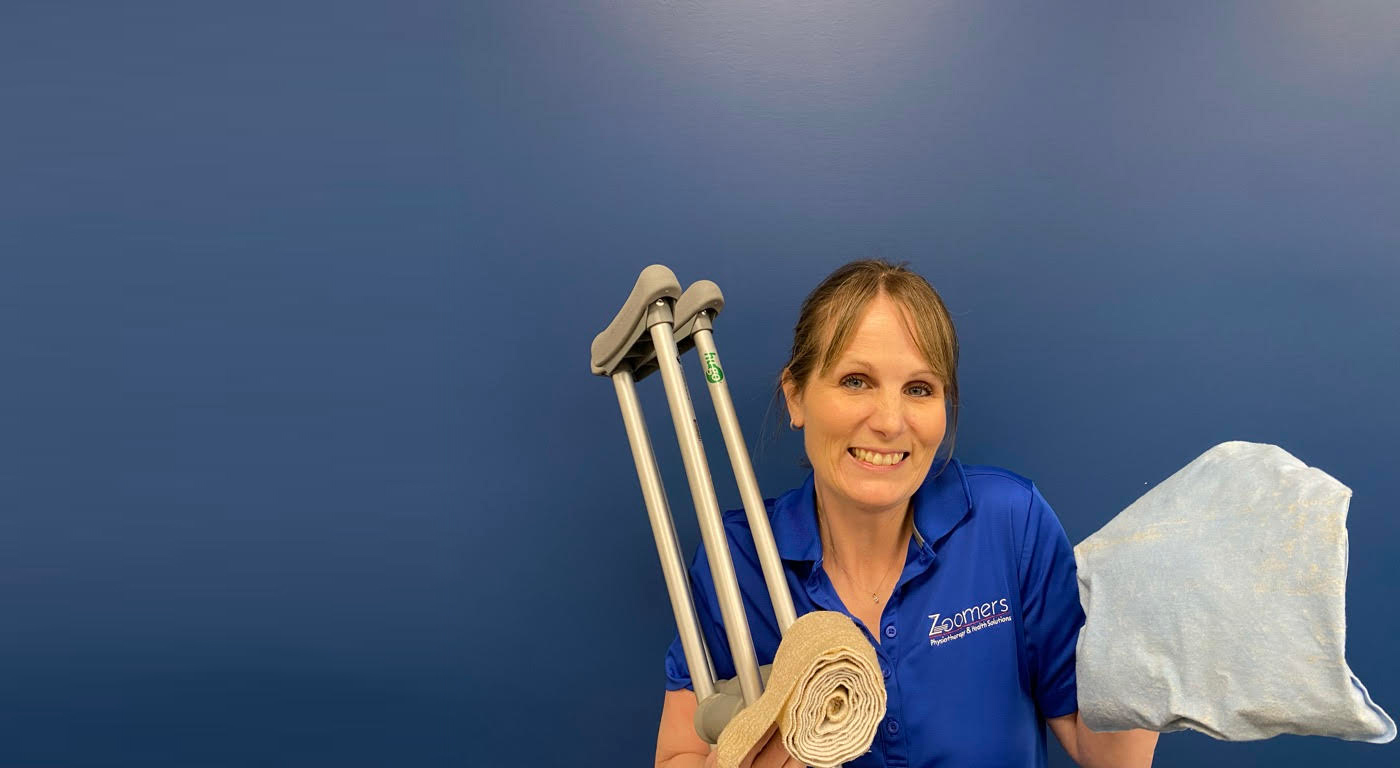Book an assessment with Zoomers now!
Use our online booking tool to find a time that works for you!
Managing an acute injury can be difficult. However, there are some physiotherapy tips that can help you feel more comfortable and get on the path to recovery quickly after injury.
The acute phase of an injury is generally accepted to be the first three days after it occurs. Acute soft tissue injuries like sprains, strains, and deep bruising from a fall should be assessed by a healthcare professional like a physiotherapist. An assessment with a physiotherapist can help you understand what is causing the pain (ruling out more serious injury) and get the right plan in place for optimal recovery.
However, what happens if your injury happens on a Friday night at 8 pm and you don’t have access to your physiotherapist until at least Monday? What are the best physiotherapy tips for pain relief to kickstart an optimal recovery in that acute phase?
Historically, acute soft tissue injuries were always treated using the “PRICE” acronym: Protect, Rest, Ice, Compress, and Elevate. The guidance included restricting movement of the affected area (sometimes with a splint or sling), using ice packs, applying a tensor bandage to create external pressure, and keeping the injured area above the level of the heart if possible.
In recent years, there has been concern that the PRICE (and similar) approach encourages prolonged periods of restricted movement and could negatively affect recovery by disrupting the body’s inflammatory response (which is necessary for healing).
In response to this concern, a new acronym for acute injury management was proposed in 2019 (Dubois and Esculier), “PEACE”: Protect, Elevate, Avoid anti-inflammatory medications/ice, Compress, and Educate. At first glance, these two sets of physiotherapy tips seem to have a lot of overlap. Protect, Elevate and Compress are essentially the same. However, there are some important differences.
The biggest difference between these two sets of physiotherapy tips is the specific recommendation against anti-inflammatory medications and against using ice. The theory is that the inflammatory process is the natural healing process for the body and should not be disrupted. The Education part of the PEACE acronym also emphasizes how important it is to promote active (movement-based) recovery and set realistic timelines for healing.
Taking all of this information into consideration, here are 5 physiotherapy tips for acute pain management that can be tried while waiting for a physiotherapy assessment.
- Remember, it WILL get better!
- Keep moving but protect the injured area from activities that cause significantly increased pain.
- Use a compression wrap and elevate the injured area, when possible, to reduce swelling and pain.
- Speak with a pharmacist regarding any medication you might consider taking for pain relief.
- Consider using ice as needed for pain relief. Avoid prolonged periods of cooling until you speak with your physiotherapist to determine the right approach for your situation.
Each injury needs to be considered individually. Although these physiotherapy tips may be helpful, seeking physiotherapy assessment after injury is important to ensure you have the right plan in place for optimal recovery! If you could use some help with your current injury, book an assessment with a Zoomers physiotherapist to get started on your optimal path today.
Book an assessment with Zoomers
Use our online booking tool to find a time that works for you!


